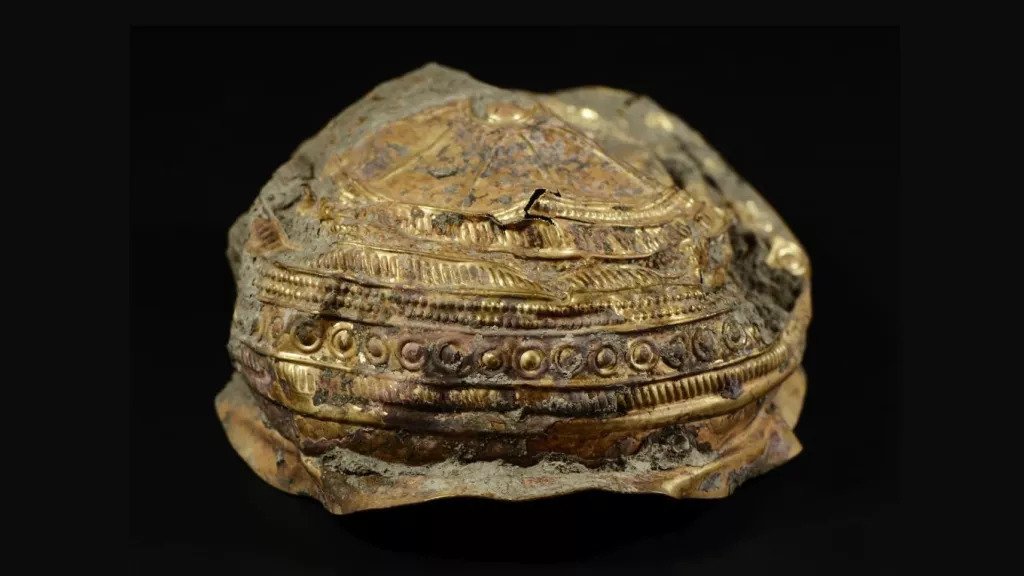Gold ‘sun bowl’ discovered near Bronze Age swamp
Archaeologists excavating a 3,000-year-old settlement in Austria have unearthed a golden bowl with the image of a sun adorning its underside.
“At the bottom of the bowl, a sun disc with 11 rays is depicted,” Michał Sip, an archaeologist with the German company Novetus, who is leading excavations at the site, told Live Science in an email. The artisan (or artisans) who crafted the bowl also included a “circular motif [images] of circles and dots” decorating the bowl’s exterior, Sip said.
The fragile bowl was shaped out of gold sheet metal, and it “probably had a cultic function,” Sip added.

Archaeologists know of about 30 similar bowls from ancient Europe, but “this is the first find of this type in Austria, and the second to the east of the alpine line,” Sip told Science in Poland.
These bowls were produced in the regions of what is now Germany, Scandinavia and Denmark, he noted.
At nearly 8 inches (20 centimetres) in diameter, the bowl is slightly larger than a person’s hand. But it’s very shallow — just 2 inches (5 cm) tall. An analysis revealed that the vessel is about 90% gold, 5% silver and 5% copper, and researchers are now hoping to discover where its raw materials originated, according to Science in Poland.
The bowl wasn’t the only stunning artefact found at the site. Two bracelets made from twisted gold wires were found with the bowl, and some organic remains, possibly fabric or leather, still cling to them.
The team is doing DNA tests to try to determine what the organic remains are, Sip said.
The bowl was found near the wall of one of the houses at the Bronze Age settlement, said Sip, adding that it’s possible that the bowl was wrapped in the gold wires and intentionally deposited at this location, perhaps during a religious ceremony honouring the sun.
The settlement dates back to before writing was used in the area, making it harder to determine what exactly the bowl would have been used for.
The prehistoric settlement lies beneath the modern-day town of Ebreichsdorf, Austria, and excavations are being conducted prior to the construction of a train station at the site.
During their excavations, the archaeologists also found nearly 500 bronze objects, including daggers, pins and knives, in a now-dry area south of the settlement that was once a swamp.
None of these objects is damaged, meaning that the swamp wasn’t used as a garbage dump for broken goods. Rather, these bronze objects were likely thrown into the water during rituals, Sip told Science in Poland.
After excavations are complete, the site will be returned to the Austrian Federal Railways, Sip said. Excavation of the site and analysis of its remains is ongoing. The gold bowl will soon go on display at Kunsthistorisches Museum in Vienna.





